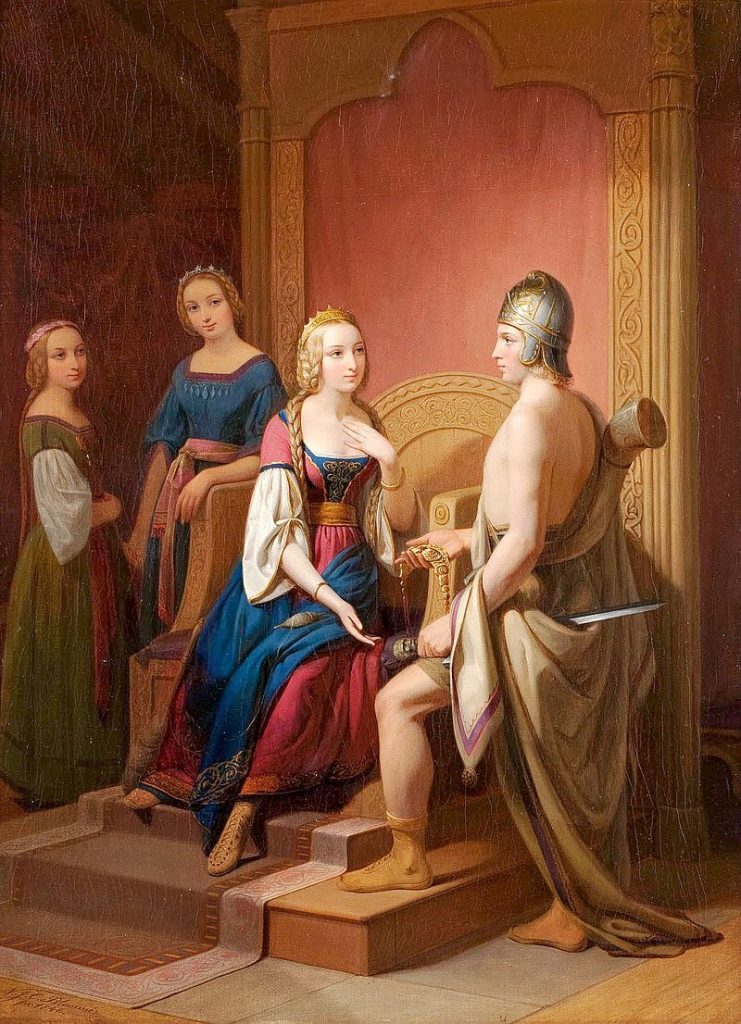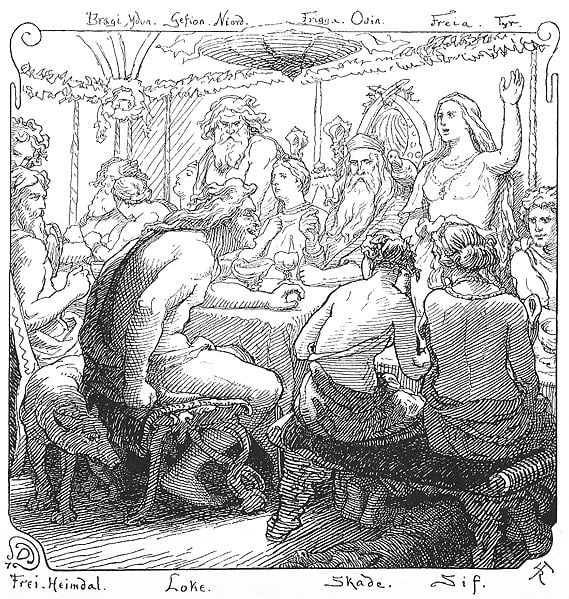Norse mythology has many gods and goddesses, describing their adventures across numerous lines of poetry. According to Snorri Sturluson’s Prose Edda, there are 12 gods and 12 goddesses, but none of them are quite as prominent as Freya. Who was she? What could she do? Find out more here!
Who Is Freya?

The name of this Norse goddess is sometimes spelled “Freyja,” though she has several other names as well.
The reason that Freya, or Freyja, is so popular is that she is one of the most renowned, recognized, and respected goddesses in Norse mythology. Her name is the Old Norse word for “lady.” Her father, Njörd, was the god of the sea, and she was the sister of Freyr, the ruler of peace, fertility, rain, and sunshine. She married a much lesser-known Norse god named Odr. She is also the mother to Hnoss and Gersemi.
Along with the multiple spellings, her name, Freya, had several nicknames, including Mardöll, Hörn, Gefn, and Syr. Freyja chose the name Mardöll – meaning “sea brightener” – during her travels to find her husband. Hörn is primarily used as a Swedish name, while Gefn means “the giver.”
Freya’s Personality And Possessions

This Norse goddess was kind, compassionate, and beautiful, placing great importance on her cats.
Freya has a playful and passionate nature. As the goddess of love and beauty, she had a caring personality that was sweet, gentle, and incredibly flirty. Her coquettish nature led Loki to taunt her, claiming that she had intimate relationships with everyone, including her brother. However, her gentle nature and kindness set her apart from other Norse deities.
One of her most famous pieces of jewelry was a necklace called Brísingamen. This necklace’s name comes from an Old Norse word – “brísingr” – which refers to fire or amber. In a skaldic poem called Húsdrápa, Loki steals the necklace, leading Freyja to seek the assistance of Heimdallr in its recovery. When they learn that Loki stole it, he shapeshifts into a seal, which Heimdallr copied to fight Loki and return the necklace.
Freya placed great importance on pigs. At once time, she rode one that had golden hairs all over its body. Along with using a boar for her transportation, depictions also show her riding a chariot led by her cats. One of the most famous stories of this Norse goddess was her search for her husband. He is rarely seen in Norse mythology, but Freyja longs for him as she cries red gold tears. Many of the names she assumed were used for these travels to find him.
What Does Freya Symbolize?

While Freya consistently showed her strength and resilience, many of her stories describe the search for her husband and her disagreements with other gods, especially Loki.
Since she is the goddess of sorcery, Freya has incredible control over magic, especially as it pertains to the emotions of others. Freya stands for love, fertility, battle, and death in Norse mythology. She is found in many Eddic poems, depicting her as a wild spirit. Many of the portraits of his goddess showcase the same unruly and carefree nature. However, that enthusiastic personality was no match for her incredible knowledge and intelligence. Mythology shows that the amount of knowledge of magic and other matters matched her incredible power.
Despite being closely associated with fertility, Norse mythology seemingly knows nothing of her mother. She is one of the only goddesses associated with fertility who doesn’t have her own story of her birth, even though she has a twin. Experts have suggested that her mother was Nerthus, the goddess of peace, but mythology doesn’t conclusively show their relationship.
What Are Freya’s Powers?
As a strong and powerful Norse goddess, Freya regularly practiced a form of Norse magic known as seidr. She was the first one to bring this type of magic to other deities, leading it to be practiced in the Late Scandinavian Iron Age. This type of magic involves predicting and changing the future, according to Old Norse mythology. Freya was so skilled in this magic that she was an expert in manipulating the desires of others, using them to her advantage in the pursuit of love and fun.
Because of this spread of seidr, the lessons eventually made their way outside of Norse mythology to human witches. Essentially, Freya was almost wholly responsible for bringing magic to the masses. However, Freya didn’t need access to this Norse magic to be powerful.
Along with practicing seidr, Freya shows her ability to cry tears of gold during her grieving of her husband’s travels. Her control over the emotions of others – amokinesis – is one of her most prominent powers. She used this power to benefit her need for love and companionship, leading to the spread of many rumors. She’s often called the goddess of blessings as well because of her love and kindness.
The photo featured at the top of this post is © Emil Doepler / CC0 – License / Original
Thank you for reading! Have some feedback for us? Contact the AZ Animals editorial team.







